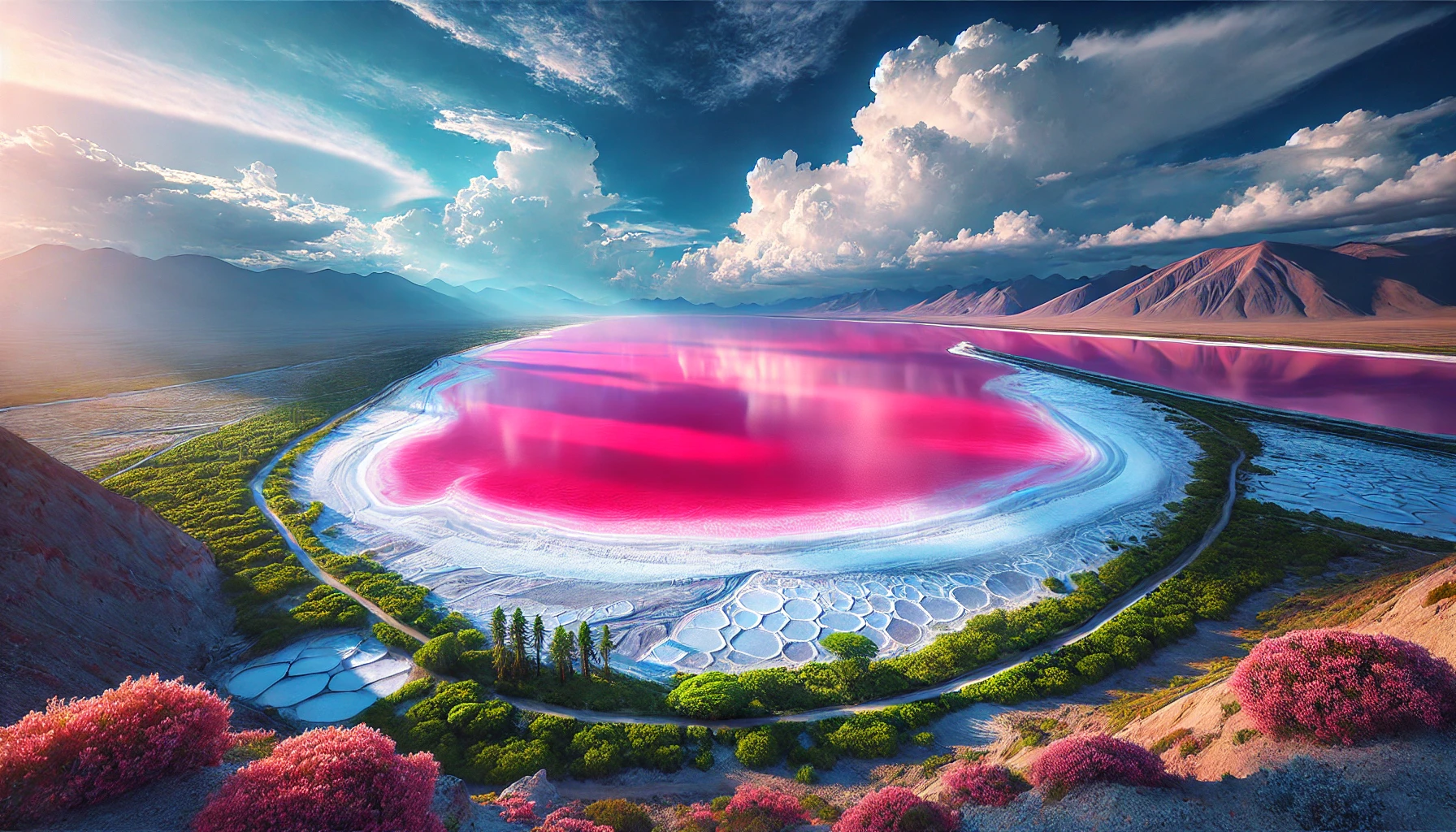Pink lakes are among the most captivating natural phenomena on Earth, their vibrant hues ranging from soft blush to deep magenta. These surreal landscapes attract travelers, photographers, and scientists alike, offering not just aesthetic beauty but also fascinating ecological and geological insights.
What Are Pink Lakes?
Pink lakes are saline bodies of water that derive their rosy color from the presence of specific microorganisms, algae, and minerals. The intensity of their color can vary depending on environmental factors like salinity, temperature, and light.
How Do Pink Lakes Form Their Color?
- Microorganisms: Algae such as Dunaliella salina produce carotenoid pigments, giving the water its pink hue.
- High Salinity: Increased salt concentration enhances the growth of pigment-producing microbes.
- Sunlight and Temperature: Intense sunlight and warm temperatures create optimal conditions for the vivid coloration.
Famous Pink Lakes Around the World
- Lake Hillier, Australia
- Located on Middle Island, its permanent pink color remains a mystery despite scientific studies.
- Lake Retba, Senegal
- Known for its high salt content and vibrant pink waters, especially during the dry season.
- Hutt Lagoon, Australia
- A popular tourist destination with hues ranging from pink to lilac.
- Las Coloradas, Mexico
- A striking pink lagoon set against white salt flats and azure skies.
Why Are Pink Lakes Important?
- Ecosystem Diversity: Pink lakes host unique microorganisms that thrive in extreme conditions.
- Economic Value: Many are sources of salt production and attract eco-tourism.
- Scientific Insights: Studying these lakes helps scientists understand extremophile organisms and climate interactions.
Best Times to Visit Pink Lakes
- Seasonal Variations: Visit during dry seasons when salinity and color are at their peak.
- Lighting Conditions: Sunrise and sunset enhance the colors for spectacular photos.
Tips for Photographing Pink Lakes
- Use Polarized Filters: Minimize reflections and capture vibrant water colors.
- Include Surroundings: Frame shots with nearby landscapes for context.
- Drone Photography: Get a bird’s-eye view to highlight the lake’s full expanse and color.
Conservation of Pink Lakes
As these natural wonders gain popularity, it’s crucial to protect them. Tourism and industrial activities can disrupt their delicate ecosystems. Sustainable practices and responsible tourism are essential to preserve their beauty for future generations.
Pink lakes are not only breathtakingly beautiful but also vital ecological treasures. Whether you’re marveling at their colors, capturing stunning photographs, or exploring their unique biodiversity, pink lakes offer an unforgettable experience.


2 thoughts on “Pink Lakes: Nature’s Rosy Wonders”